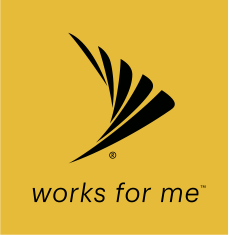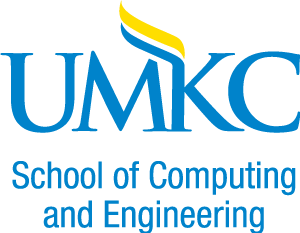Sunday, May 20
|
7:30 - 8:30
|
Registration, Breakfast
|
|
8:30 - 8:45
|
Opening Remarks
|
|
8:45 - 9:45
|
Keynote 1
Room: Chicago C
Title: Path to innovation super highway
Speaker: Vanitha Kumar, Vice President, Modem SW Engineering at Qualcomm
Details can be found here.
|
|
9:45-10:15
|
Mentor Introduction
Room: Chicago C
Group photo
|
|
10:15 - 10:30
|
Networking Break
|
|
10:30 - 11:30
|
Panel
Room: Chicago C
Topic: In the crowd of hard-working and excellent researchers: what can we do to stand out?
Panel Moderator: Ana García Armada
Panelists: Elisa Bertino (Purdue University), My Thai (University of Florida), Vanitha Kumar (Qualcomm), Victor Frost (University of Kansas), Teresa Kellett (Google)
|
|
11:30 - 12:30
|
Lightning Presentations
Room: Chicago C
1 min presentations by the authors of accepted posters. The order of lightning talks can be found here .
|
|
12:30 - 2:00
|
Lunch
|
|
2:00 - 3:00
|
Keynote 2
Room: Chicago C
Title: What’s Next for Wireless Networking Research?
Speaker: Monisha Ghosh (Program Director, National Science Foundation)
Details can be found here.
|
|
3:00 - 4:00
|
Mentoring Sessions
Room: Chicago C
Multiple parallel mentoring sessions led by experienced personnel from Industry and Academia. List of mentors can be found here.
|
|
4:00 - 4:30
|
Coffee Break
|
|
4:30 - 5:45
|
Interactive Poster Session
Room: Ballroom PreFunction
Posters will be presented in two rounds.
Round 1 includes poster #1 to #20.
Round 2 includes poster #21 to #40.
Please verify which number is your poster here .
Round 1 from 4:30 p.m. to 5:00p.m, and Round 2 from 5:10p.m. to 5:40p.m.
|
|
5:45 - 6:00
|
Best Poster Award & Closing
|
Keynote Speakers
VANITHA KUMAR
Vice President-Software Engineering, Qualcomm Technologies Incorporated
Abstract: Mobile platform has transformed the world and changed our lives way beyond what anyone could have imagined in the past decade. With advent of 5G, we are about to see another new wave of possibilities to an even more connected world. This promises to not only make our lives more efficient but will open doors for technological innovations from a new pool of creators, thinkers, makers and doers who may not be in a traditional technology domain. How will the new wave of mobile revolution achieve this and how can the engineers of today be better prepared to travel in this innovation super highway.
Bio: Vanitha Kumar is a Vice President of Software Engineering at Qualcomm Technologies Incorporated. Vanitha holds a Master of Science degree in Electrical Engineering from Northeastern University, and a Bachelor of Electronics & Communication Engineering degree from PSG College of Technology, India. Vanitha has 20 years of experience in the wireless telecommunications industry and in embedded software architecture, design, and development. She has also contributed actively to cellular technology standards. She has about 20 issued patents and several more pending.
In her current role, Vanitha leads the modem SW air interface technology including 5G, 4G-LTE, and Cellular IoT across multiple global locations. Vanitha played a key role in the commercialization and launch of CDMA in Qualcomm’s chipsets in early/mid 2000. After that she led the 4G-LTE SW team and has been responsible for integration , commercialization and launch of 4G in 1000s of products globally. She is currently also responsible for the 5G and Cellular IoT SW roadmap. She also has vast experience leading multiple generation of Qualcomm chipsets and working closely with customers , vendors and cellular carriers to enable launch of many devices.
Vanitha is passionate about the role of women in science and technology. She has chaired and put together panels for the Grace Hopper and IEEE women leadership conferences. She is on the board of Qualcomm Foundation in charge of Corporate Giving. She is also on the board of Elementary Institute of Science which is a non-profit organization that focuses on developing exposure and interest in STEM careers among young children. She is one of the recipients of the prestigious YWCA TWIN (Tribute to Women and Industry) award for 2016. Vanitha also coaches science Olympiad and Robotics teams at her daughter’s school.
Monisha Ghosh
Program Director, NSF
Abstract:Wireless networking has made unprecedented advances in the past decade, with fundamental contributions from both academia and industry. The National Science Foundation has played a pivotal role from the very beginning in nurturing research ideas from conception to reality. In this talk we will discuss new initiatives that will fuel the next generation of advances in wireless networking.
Bio: Dr. Monisha Ghosh joined NSF as a rotating Program Director in September 2017, in the Computer and Network Systems (CNS) division within the Directorate of Computer & Information Science and Engineering (CISE). She manages wireless networking research within the Networking Technologies and Systems (NeTS) program of CNS. Dr. Ghosh is a Research Professor at the University of Chicago, with a joint appointment at the Argonne National Laboratories, where she conducts research on wireless technologies for the IoT, 5G cellular, next generation Wi-Fi systems, coexistence and machine learning for predictive oncology. Prior to joining the University of Chicago in September 2015, she worked at Interdigital, Philips Research and Bell Laboratories, on various wireless systems such as the HDTV broadcast standard, cable standardization and on cognitive radio for the TV White Spaces. She has been an active contributor to many industry standards and was recognized with a Certificate of Appreciation for her outstanding contributions to IEEE 802.22. She is a Fellow of the IEEE.
She received her Ph.D. in Electrical Engineering from the University of Southern California in 1991, and her B. Tech from the Indian Institute of Technology, Kharagpur (India) in 1986.
Mentors
-
Vladimir Barash (Graphika, Inc)
-
Michelle Zhu (Montclair State University)
-
Anu Mercian (Hewlett Packard Enterprise)
-
Ali Imran (University of Oklahoma)
-
Teresa Kellett (Google)
-
Amardeep Kaur (Missouri University of Science & Technology)
- Fengjun Li (University of Kansas)
- Kira Theuer (National Instruments)
Lightning Talks
|
Presentation Order - Lightning Talks
|
||
|
#
|
Title
|
Authors with affiliation and country
|
|
1
|
360 Video Caching In Mobile Edge Computing
|
Anahita Mahzari, Afshin Taghavi Nasrabadi, Aliehsan Samiei and Ravi Prakash (University of Texas at Dallas, USA)
|
|
2
|
A Self-Adaptable System for DDoS Attack Prediction Based on the Metastability Theory
|
Andressa Vergütz and Mateus Pelloso (Federal University of Paraná, Brazil); Michele Nogueira (Federal University of Parana (UFPR), Brazil)
|
|
3
|
Performance Analysis of Three Hop Relay Assisted Hybrid VLC/FSO/VLC Network Design
|
Anshul Vats (Maharishi Dayanand University, India); Mona Aggarwal (Northcap University, Gurgaon, India); Swaran Ahuja (North Cap University, India)
|
|
4
|
Frequency planning for load balancing in Vehicular Networks
|
Avirup Das (University of Calcutta, India)
|
|
5
|
Content Delivery in Mobility-Aware D2D Caching Networks
|
Badiaa Fouad (Nile University, Egypt)
|
|
6
|
Packet Replication on Disjoint MPTCP Paths
|
Benevid Felix (UFPR, Brazil); Michele Nogueira (Federal University of Parana (UFPR), Brazil)
|
|
7
|
Reliable Bacterial Communication Networks
|
Bhuvana Krishnaswamy and Raghupathy Sivakumar (Georgia Institute of Technology, USA)
|
|
8
|
Efficient Data Dissemination in a Decentralized Online Social Network
|
Esra Erdin (University of Nevada, Reno, USA)
|
|
9
|
Unified Framework for Network Slices Allocation
|
Francesca Fossati (LIP6, France); Stefano Moretti (Université Paris Dauphine CNRS UMR, France); Patrice Perny (LIP6, France); Stefano Secci (Sorbonne Université, France)
|
|
10
|
TCP Throughput and Packet Delivery Ratio performances in an Underwater Wireless Sensor Network
|
Hajar Bennouri (ENSIAS, Morocco)
|
|
11
|
A multi-layered reliability approach in vehicular Ad- Hoc networks
|
Hasita Kaja (University of Missouri, Kansas City, USA); Cory Beard (University of Missouri-Kansas City, USA)
|
|
12
|
Protocol Heterogeneity Issues of Incremental Campus Wi-Fi Deployment
|
Haymanot Gebre-Amlak (University of Missouri-Kansas City, USA); Md Tajul Islam, Daniel Cummins, Mohammed Al Mansoori and Baek-Young Choi (University of Missouri - Kansas City, USA)
|
|
13
|
mmWave spatial analysis based on Graph Theory
|
Hemalatha Vulchi and Ana Garcia Armada (Universidad Carlos III de Madrid, Spain)
|
|
14
|
Faster Image Retrieval in Low-Bandwidth with Optimal Scan
|
Jannatun Noor (Bangladesh University of Engineering and Technology, Bangladesh); Md. Golam Hossain (IPVision Limited, Bangladesh); A. B. M. Alim Al Islam (Bangladesh University of Engineering and Technology, Bangladesh)
|
|
15
|
svLoad: An Automated Load Testing Architecture
|
Jannatun Noor (Bangladesh University of Engineering and Technology, Bangladesh); Md. Golam Hossain (IPVision Limited, Bangladesh); Muhammad Ahad Alam (Bangladesh University of Engineering and Technology, Bangladesh); Sriram Chellappan (University of South Florida, USA); A. B. M. Alim Al Islam (Bangladesh University of Engineering and Technology, Bangladesh)
|
|
16
|
Contract-based Incentive Mechanism for LTE over Unlicensed Channels
|
Kenza Hamidouche (Supelec, France); Walid Saad (Virginia Tech, USA); Mérouane Debbah (Huawei, France)
|
|
17
|
Named Data Routing Strategy
|
Mahmuda Naznin (Bangladesh University of Engineering and Technology (BUET), Bangladesh)
|
|
18
|
On Demand Zone Based Data Delivery in a Wireless Sensor Network
|
Mahmuda Naznin (Bangladesh University of Engineering and Technology (BUET), Bangladesh); Abu Chowdhury (Washington State University, USA)
|
|
19
|
Beam Training and Data Transmission Optimization in Mm-Wave Vehicular Networks
|
Maria Scalabrin (University of Padova, Italy); Nicolò Michelusi (Purdue University, USA); Michele Rossi (University of Padova, Italy)
|
|
20
|
On the Choice of the Optimal Receiving Orientation Angle for Visible Light Communications
|
Máximo Morales-Céspedes and Ana Garcia Armada (Universidad Carlos III de Madrid, Spain)
|
|
21
|
Poisson Cluster Process-based Unified Model for Heterogeneous Cellular Networks
|
Mehrnaz Afshang (Virigina Tech, USA); Chiranjib Saha (Virginia Polytechnic Institute and State University, USA); Harpreet S Dhillon (Virginia Tech, USA)
|
|
22
|
Identity Modulation (ID-M)
|
Monette Khadr (University at Albany, SUNY, USA); Hany Elgala (University at Albany, SUNY & NSF Lighting Enabled Systems and Applications ERC, USA)
|
|
23
|
Conforming Wi-Fi to Low-latency Requirements for Faulty Scenarios in Smart Grid
|
Nahla Ali and Francesco Gringoli (University of Brescia, Italy)
|
|
24
|
LANET: Software-defined Visible-light Ad Hoc Networks
|
Nan Cen, Zhangyu Guan and Tommaso Melodia (Northeastern University, USA)
|
|
25
|
Cyber Resilience of the Internet of Things via Bio-inspired Artificial Intelligence Techniques
|
Nistha Tandiya, Vuk Marojevic and Jeffrey Reed (Virginia Tech, USA)
|
|
26
|
Impact of Positioning Errors on V2V Networks Employing Beamforming
|
Nivetha Kanthasamy and Ruixiang Du (Worcester Polytechnic Institute, USA); Alexander Wyglinski (WPI, USA); Raghvendra Cowlagi (Worcester Polytechnic Institute, USA)
|
|
27
|
Fundamental Limits in Heterogeneous Broadcast Caching Networks with Correlated Sources
|
Parisa Hassanzadeh (New York University, USA); Antonia Tulino (Bell Laboratories, USA & Università degli studi di Napoli, Italy); Jaime Llorca (Nokia Bell Labs, USA); Elza Erkip (New York University, USA)
|
|
28
|
Multi-user Beam-Alignment for Millimeter-Wave Networks
|
Rana A. Hassan and Nicolò Michelusi (Purdue University, USA)
|
|
29
|
Enabling Green and Agile NFV Environments through Model-based Analytics
|
Roberto Bruschi (CNIT, Italy); Franco R. Davoli (University of Genoa & National Inter-University Consortium for Telecommunications (CNIT), Italy); Paolo Lago (CNIT, Italy); Jane Frances Pajo (University of Genoa, Italy)
|
|
30
|
Towards Smart Wireless Body-Centric Networks
|
Samiya M. Shimly (The Australian National University (ANU) & Data61, CSIRO, Australia); David B Smith (Data61 CSIRO & Australian National University, Australia)
|
|
31
|
An adaptive clustering protocol for Wireless Sensor Network protocol based on energy and location
|
Sara Kassan (University of Haute Alsace & UHA, France); Jaafar Gaber (UTBM, France); Pascal Lorenz (University of Haute Alsace, France)
|
|
32
|
AAHCC: Adaptation Aware Hybrid Client-Cache for DASH video QoE
|
Sheyda Kiani Mehr and Deep Medhi (University of Missouri-Kansas City, USA)
|
|
33
|
Big Data Architecture using a Profiling System applied to Agriculture
|
Soumaya Lamrhari (ENSIAS, Mohammed V University in Rabat, Morocco); Hamid Elghazi (INPT, Morocco); Abdellatif El Faker (ENSIAS, Mohammed V University in Rabat, Morocco)
|
|
34
|
Impulse response clustering for 60 GHz vehicular channels
|
Sucheta Bhaumik (National Institute of Technology Durgapur, India); Ales Prokes (Brno University of Technology & Sensor, Information and Communication Systems Research Centre, Czech Republic); Aniruddha Chandra (National Institute of Technology, Durgapur, WB, India)
|
|
35
|
Setting up MU-MIMO Experiments
|
Tejashri Kuber (WINLAB, Rutgers University, USA)
|
|
36
|
The Internet, an invaluable tool for Ghana and beyond
|
Timothy Kwadwo Asiedu (IEEE Member: Computer + Communication Society, Ghana)
|
|
37
|
Channel Modelling for 60GHz millimetre wave for in-vehicular communication
|
Ushasi Ghosh (National Institute of Technology, Durgapur, India)
|
|
38
|
Toward Automated Spectrum Analysis of Land Mobile Radio (LMR) Spectrum
|
Vaishali Nagpure and Cynthia Hood (Illinois Institute of Technology, USA)
|
|
39
|
Hybrid Analog-Digital Beamforming for 5G massive MIMO systems
|
Xiaoguang Zhao and Florian Kaltenberger (Eurecom, France)
|
|
40
|
Rogue Edge Detection with Reinforcement Learning Based on Ambient Radio Signals in VANETs
|
Xiaozhen Lu, Xiaoyue Wan, Liang Xiao and Yuliang Tang (Xiamen University, P.R. China); Weihua Zhuang (University of Waterloo, Canada)
|
Accepted Posters
|
Title
|
Authors with affiliation and country
|
|
Named Data Routing Strategy
|
Mahmuda Naznin (Bangladesh University of Engineering and Technology (BUET), Bangladesh)
|
|
On Demand Zone Based Data Delivery in a Wireless Sensor Network
|
Mahmuda Naznin (Bangladesh University of Engineering and Technology (BUET), Bangladesh); Abu Chowdhury (Washington State University, USA)
|
|
Protocol Heterogeneity Issues of Incremental Campus Wi-Fi Deployment
|
Haymanot Gebre-Amlak (University of Missouri-Kansas City, USA); Md Tajul Islam, Daniel Cummins, Mohammed Al Mansoori and Baek-Young Choi (University of Missouri - Kansas City, USA)
|
|
TCP Throughput and Packet Delivery Ratio performances in an Underwater Wireless Sensor Network
|
Hajar Bennouri (ENSIAS, Morocco)
|
|
svLoad: An Automated Load Testing Architecture
|
Jannatun Noor (Bangladesh University of Engineering and Technology, Bangladesh); Md. Golam Hossain (IPVision Limited, Bangladesh); Muhammad Ahad Alam (Bangladesh University of Engineering and Technology, Bangladesh); Sriram Chellappan (University of South Florida, USA); A. B. M. Alim Al Islam (Bangladesh University of Engineering and Technology, Bangladesh)
|
|
Unified Framework for Network Slices Allocation
|
Francesca Fossati (LIP6, France); Stefano Moretti (Université Paris Dauphine CNRS UMR, France); Patrice Perny (LIP6, France); Stefano Secci (Sorbonne Université, France)
|
|
Big Data Architecture using a Profiling System applied to Agriculture
|
Soumaya Lamrhari (ENSIAS, Mohammed V University in Rabat, Morocco); Hamid Elghazi (INPT, Morocco); Abdellatif El Faker (ENSIAS, Mohammed V University in Rabat, Morocco)
|
|
Toward Automated Spectrum Analysis of Land Mobile Radio (LMR) Spectrum
|
Vaishali Nagpure and Cynthia Hood (Illinois Institute of Technology, USA)
|
|
An adaptive clustering protocol for Wireless Sensor Network protocol based on energy and location
|
Sara Kassan (University of Haute Alsace & UHA, France); Jaafar Gaber (UTBM, France); Pascal Lorenz (University of Haute Alsace, France)
|
|
a multi-layered reliability approach in vehicular Ad- Hoc networks
|
Hasita Kaja (University of Missouri, Kansas City, USA); Cory Beard (University of Missouri-Kansas City, USA)
|
|
mmWave spatial analysis based on Graph Theory
|
Hemalatha Vulchi and Ana Garcia Armada (Universidad Carlos III de Madrid, Spain)
|
|
Fundamental Limits in Heterogeneous Broadcast Caching Networks with Correlated Sources
|
Parisa Hassanzadeh (New York University, USA); Antonia Tulino (Bell Laboratories, USA & Università degli studi di Napoli, Italy); Jaime Llorca (Nokia Bell Labs, USA); Elza Erkip (New York University, USA)
|
|
Faster Image Retrieval in Low-Bandwidth with Optimal Scan
|
Jannatun Noor (Bangladesh University of Engineering and Technology, Bangladesh); Md. Golam Hossain (IPVision Limited, Bangladesh); A. B. M. Alim Al Islam (Bangladesh University of Engineering and Technology, Bangladesh)
|
|
Content Delivery in Mobility-Aware D2D Caching Networks
|
Badiaa Fouad (Nile University, Egypt)
|
|
Enabling Green and Agile NFV Environments through Model-based Analytics
|
Roberto Bruschi (CNIT, Italy); Franco R. Davoli (University of Genoa & National Inter-University Consortium for Telecommunications (CNIT), Italy); Paolo Lago (CNIT, Italy); Jane Frances Pajo (University of Genoa, Italy)
|
|
Reliable Bacterial Communication Networks
|
Bhuvana Krishnaswamy and Raghupathy Sivakumar (Georgia Institute of Technology, USA)
|
|
Conforming Wi-Fi to Low-latency Requirements for Faulty Scenarios in Smart Grid
|
Nahla Ali and Francesco Gringoli (University of Brescia, Italy)
|
|
Mobility Aware Service Region Partition for Mobile Edge Computing
|
Xinjie Guan and Xili Wan (Nanjing Tech University, P.R. China); Baek-Young Choi (University of Missouri - Kansas City, USA)
|
|
Towards Smart Wireless Body-Centric Networks
|
Samiya M. Shimly (The Australian National University (ANU) & Data61, CSIRO, Australia); David B Smith (Data61 CSIRO & Australian National University, Australia)
|
|
AAHCC: Adaptation Aware Hybrid Client-Cache for DASH video QoE
|
Sheyda Kiani Mehr and Deep Medhi (University of Missouri-Kansas City, USA)
|
|
Hybrid Analog-Digital Beamforming for 5G massive MIMO systems
|
Xiaoguang Zhao and Florian Kaltenberger (Eurecom, France)
|
|
Frequency planning for load balancing in Vehicular Networks
|
Avirup Das (University of Calcutta, India)
|
|
Rogue Edge Detection with Reinforcement Learning Based on Ambient Radio Signals in VANETs
|
Xiaozhen Lu, Xiaoyue Wan, Liang Xiao and Yuliang Tang (Xiamen University, P.R. China); Weihua Zhuang (University of Waterloo, Canada)
|
|
360 Video Caching In Mobile Edge Computing
|
Anahita Mahzari, Afshin Taghavi Nasrabadi, Aliehsan Samiei and Ravi Prakash (University of Texas at Dallas, USA)
|
|
Packet Replication on Disjoint MPTCP Paths
|
Benevid Felix (UFPR, Brazil); Michele Nogueira (Federal University of Parana (UFPR), Brazil)
|
|
The Internet, an invaluable tool for Ghana and beyond
|
Timothy Kwadwo Asiedu (IEEE Member: Computer + Communication Society, Ghana)
|
|
Multi-user Beam-Alignment for Millimeter-Wave Networks
|
Rana A. Hassan and Nicolò Michelusi (Purdue University, USA)
|
|
LANET: Software-defined Visible-light Ad Hoc Networks
|
Nan Cen, Zhangyu Guan and Tommaso Melodia (Northeastern University, USA)
|
|
A Novel Inter-Relay assisted Mixed RF-FSO System Design and Its Performance Analysis
|
Himanshu Khanna and Mona Aggarwal (Northcap University, Gurgaon, India); Swaran Ahuja (North Cap University, India)
|
|
A Self-Adaptable System for DDoS Attack Prediction Based on the Metastability Theory
|
Mateus Pelloso and Andressa Vergütz (Federal University of Paraná, Brazil); Michele Nogueira (Federal University of Parana (UFPR), Brazil)
|
|
On the Choice of the Optimal Receiving Orientation Angle for Visible Light Communications
|
Máximo Morales-Céspedes and Ana Garcia Armada (Universidad Carlos III de Madrid, Spain)
|
|
Cyber Resilience of the Internet of Things via Bio-inspired Artificial Intelligence Techniques
|
Nistha Tandiya, Vuk Marojevic and Jeffrey Reed (Virginia Tech, USA)
|
|
Beam Training and Data Transmission Optimization in Mm-Wave Vehicular Networks
|
Maria Scalabrin (University of Padova, Italy); Nicolò Michelusi (Purdue University, USA); Michele Rossi (University of Padova, Italy)
|
|
Performance Analysis of Three Hop Relay Assisted Hybrid VLC/FSO/VLC Network Design
|
Anshul Vats (Maharishi Dayanand University, India); Mona Aggarwal (Northcap University, Gurgaon, India); Swaran Ahuja (North Cap University, India)
|
|
Efficient Data Dissemination in a Decentralized Online Social Network
|
Esra Erdin (University of Nevada, Reno, USA)
|
|
Impulse response clustering for 60 GHz vehicular channels
|
Sucheta Bhaumik (National Institute of Technology Durgapur, India); Ales Prokes (Brno University of Technology & Sensor, Information and Communication Systems Research Centre, Czech Republic); Aniruddha Chandra (National Institute of Technology, Durgapur, WB, India)
|
|
Impact of Positioning Errors on V2V Networks Employing Beamforming
|
Nivetha Kanthasamy and Ruixiang Du (Worcester Polytechnic Institute, USA); Alexander Wyglinski (WPI, USA); Raghvendra Cowlagi (Worcester Polytechnic Institute, USA)
|
|
Coverage Analysis for Opportunistic RF/VLC Large Scale Networks
|
Hina Tabassum and Ekram Hossain (University of Manitoba, Canada)
|
|
Identity Modulation (ID-M)
|
Monette Khadr (University at Albany, SUNY, USA); Hany Elgala (University at Albany, SUNY & NSF Lighting Enabled Systems and Applications ERC, USA)
|
|
Channel Modelling for 60GHz millimetre wave for in-vehicular communication
|
Ushasi Ghosh (National Institute of Technology, Durgapur, India)
|
|
Setting up MU-MIMO Experiments
|
Tejashri Kuber (WINLAB, Rutgers University, USA)
|
|
Poisson Cluster Process-based Unified Model for Heterogeneous Cellular Networks
|
Mehrnaz Afshang (Virigina Tech, USA); Chiranjib Saha (Virginia Polytechnic Institute and State University, USA); Harpreet S Dhillon (Virginia Tech, USA)
|
|
Cross-Layer Energy Model for Relay Assisted 802.15.4 Networks
|
Sankalita Biswas (Burdwan, West Bengal, India); Aniruddha Chandra (National Institute of Technology, Durgapur, WB, India)
|
|
Contract-based Incentive Mechanism for LTE over Unlicensed Channels
|
Kenza Hamidouche (Supelec, France); Walid Saad (Virginia Tech, USA); Mérouane Debbah (Huawei, France)
|


















